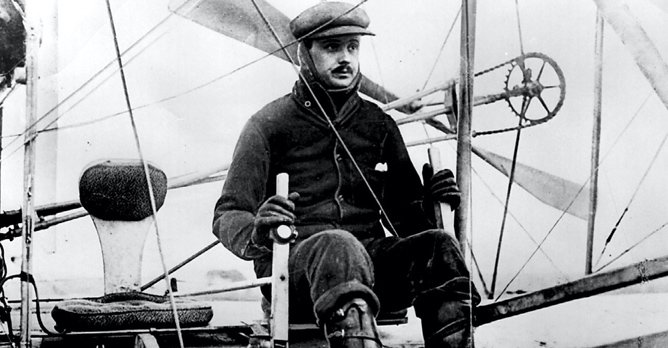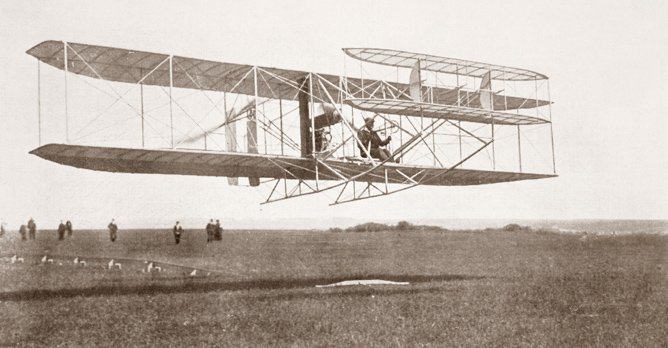Rolls-Royce remembers founder's pioneering flight
03 Jun 2020|120 views
At 6:30pm on 2 June 1910, aviation pioneer Charles Stewart Rolls took off alone in his flimsy biplane from Swingate aerodrome, near Dover, to achieve the world's first non-stop double crossing of the English Channel by aeroplane.
According to a report in the Daily Telegraph, Rolls reached an altitude of 274m and a speed of around 64km/h as he approached the coast of France.
In an adventure lasting 95 minutes, Rolls had achieved two immortal landmarks. He had become both the first Englishman to fly an aeroplane across the English Channel, and the first aviator ever to fly non-stop from England to France and back again.
The flight caused a sensation and made Rolls an instant national celebrity. The recently-crowned King George V sent a personal telegram - "The Queen and I heartily congratulate you on your splendid Cross-Channel flight. George R.I."
Rolls made his double crossing in a Wright Flyer, designed by Wilbur and Orville Wright, who had recorded the world's very first flight in a heavier-than-air machine just seven years earlier in 1903. His aeroplane, built from wood and fabric braced with spars and wires, had a wingspan of just 12 metres and weighed only 457kg including the engine - about the same weight as a grand piano.
His flying career spanned what was then virtually the entire history of aviation. He was a founding member of the Royal Aero Club, initially as a balloonist, making over 170 flights and winning the Gordon Bennett Gold Medal in 1903 for the longest sustained time aloft.
In the spring of 1909, when the Wright brothers came to England from America as guests of the Royal Aero Club, Rolls acted as their official host. A year later, he became only the second person in Britain to be awarded an aeroplane pilot's licence
After their historic first meeting in 1904, Rolls tried to persuade Henry Royce to build an aeroplane. He failed - one can only speculate as to what marvels might have resulted had he succeeded - but undeterred, Rolls bought a Wright Flyer in which he made more than 200 flights.
Tragically, it was in such a machine that Rolls met his death just a month after his cross-Channel feat. On 12 July 1910, during a competition at Bournemouth, the tail-piece broke off and the aircraft plunged to the ground from a height of 30m, crashing close to the crowded grandstand in a tangle of spars and canvas.
Rolls sustained a fractured skull and was pronounced dead at the scene. He was only the twelfth person in history to be killed in a flying accident, and the first Briton to lose his life in a powered aircraft. He was just a few weeks short of his 33rd birthday. Although Rolls is vastly more famous today for his automotive achievements, his contribution to aviation was immense and important. In April 1912, a statue commemorating his double Channel crossing was erected in Guilford Gardens on Dover's seafront. It now stands in Marine Parade Gardens, where it was rededicated on 2 June 1995 by the then Chairman of the Rolls-Royce Heritage Trust.
At 6:30pm on 2 June 1910, aviation pioneer Charles Stewart Rolls took off alone in his flimsy biplane from Swingate aerodrome, near Dover, to achieve the world's first non-stop double crossing of the English Channel by aeroplane.
According to a report in the Daily Telegraph, Rolls reached an altitude of 274m and a speed of around 64km/h as he approached the coast of France.
In an adventure lasting 95 minutes, Rolls had achieved two immortal landmarks. He had become both the first Englishman to fly an aeroplane across the English Channel, and the first aviator ever to fly non-stop from England to France and back again.
The flight caused a sensation and made Rolls an instant national celebrity. The recently-crowned King George V sent a personal telegram - "The Queen and I heartily congratulate you on your splendid Cross-Channel flight. George R.I."
Rolls made his double crossing in a Wright Flyer, designed by Wilbur and Orville Wright, who had recorded the world's very first flight in a heavier-than-air machine just seven years earlier in 1903. His aeroplane, built from wood and fabric braced with spars and wires, had a wingspan of just 12 metres and weighed only 457kg including the engine - about the same weight as a grand piano.
His flying career spanned what was then virtually the entire history of aviation. He was a founding member of the Royal Aero Club, initially as a balloonist, making over 170 flights and winning the Gordon Bennett Gold Medal in 1903 for the longest sustained time aloft.
In the spring of 1909, when the Wright brothers came to England from America as guests of the Royal Aero Club, Rolls acted as their official host. A year later, he became only the second person in Britain to be awarded an aeroplane pilot's licence
After their historic first meeting in 1904, Rolls tried to persuade Henry Royce to build an aeroplane. He failed - one can only speculate as to what marvels might have resulted had he succeeded - but undeterred, Rolls bought a Wright Flyer in which he made more than 200 flights.
Tragically, it was in such a machine that Rolls met his death just a month after his cross-Channel feat. On 12 July 1910, during a competition at Bournemouth, the tail-piece broke off and the aircraft plunged to the ground from a height of 30m, crashing close to the crowded grandstand in a tangle of spars and canvas.
Rolls sustained a fractured skull and was pronounced dead at the scene. He was only the twelfth person in history to be killed in a flying accident, and the first Briton to lose his life in a powered aircraft. He was just a few weeks short of his 33rd birthday. Although Rolls is vastly more famous today for his automotive achievements, his contribution to aviation was immense and important. In April 1912, a statue commemorating his double Channel crossing was erected in Guilford Gardens on Dover's seafront. It now stands in Marine Parade Gardens, where it was rededicated on 2 June 1995 by the then Chairman of the Rolls-Royce Heritage Trust.
Latest COE Prices
August 2025 | 2nd BIDDING
NEXT TENDER: 03 Sep 2025
CAT A$104,524
CAT B$124,400
CAT C$72,190
CAT E$125,001
View Full Results Thank You For Your Subscription.






















